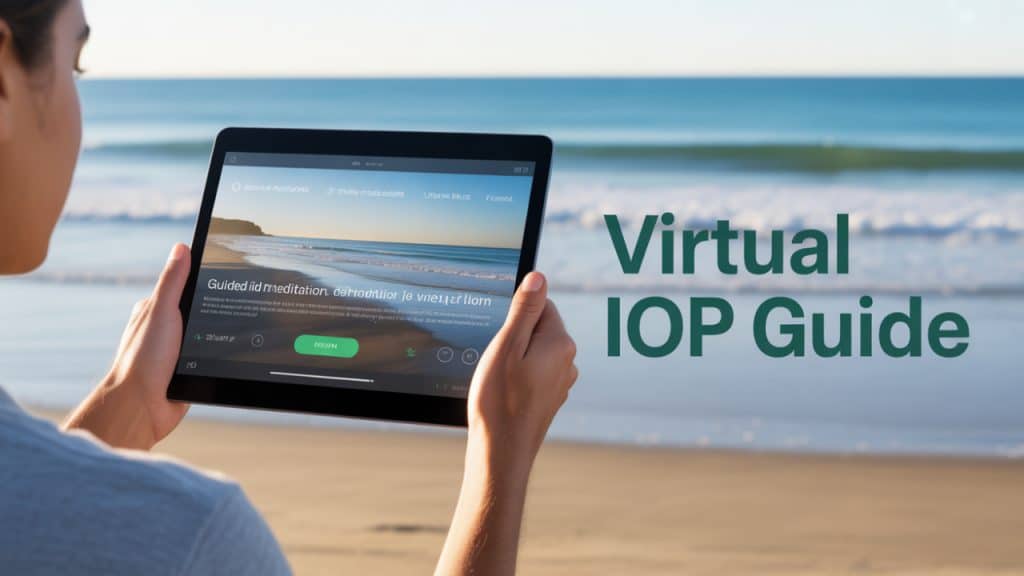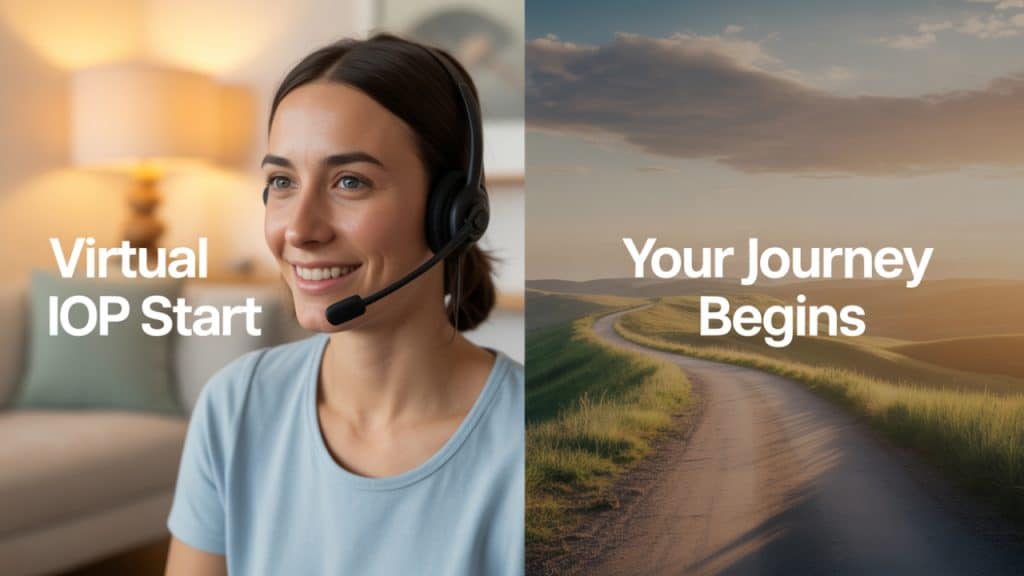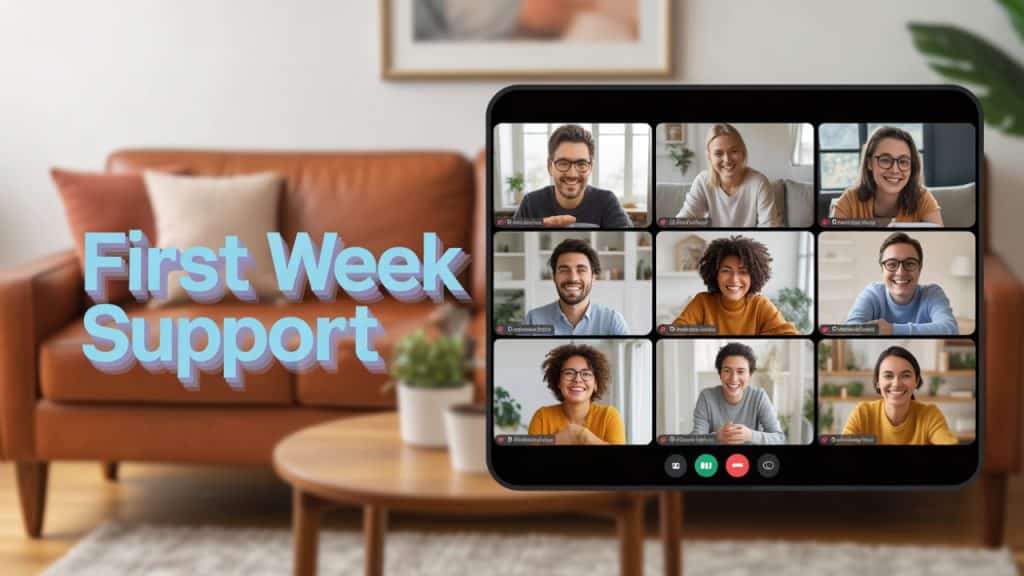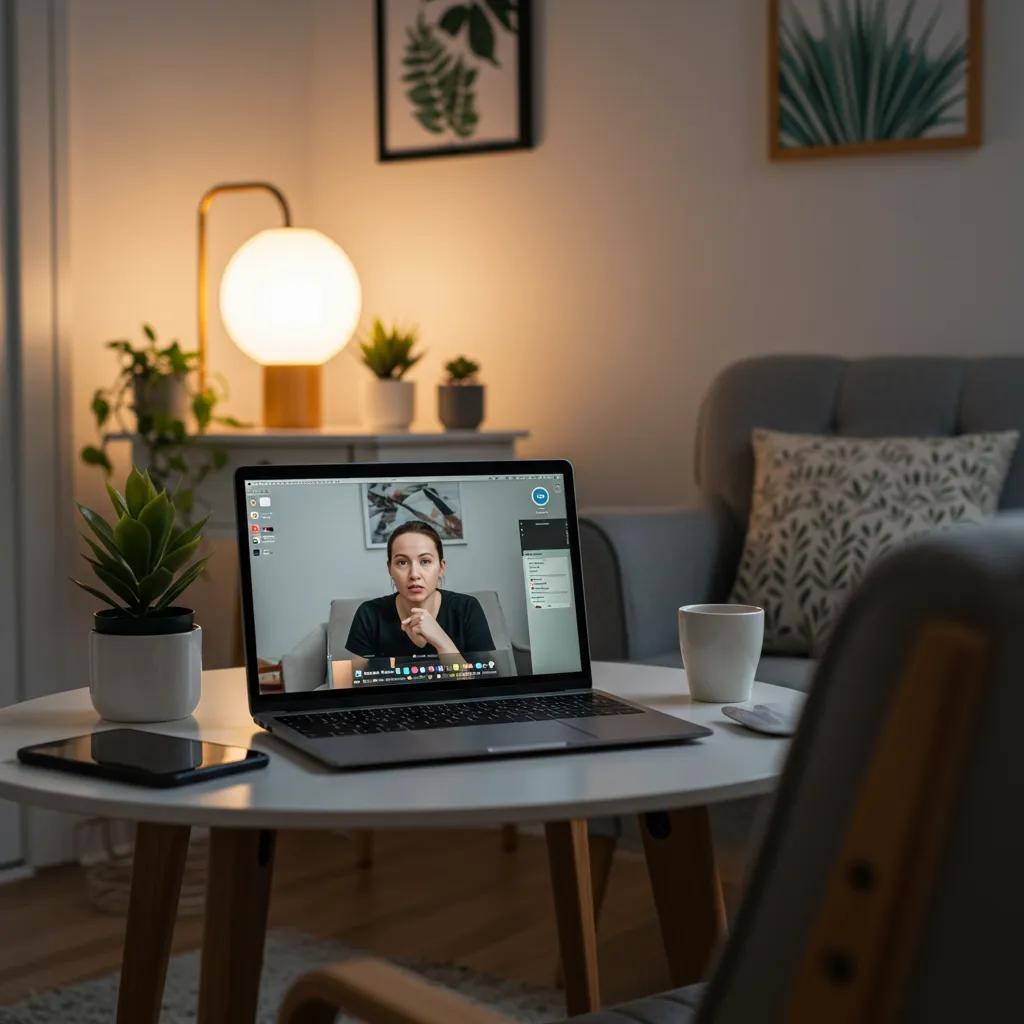What to Expect in Your First Week of Virtual IOP: A Complete Guide to Your Online Intensive Outpatient Program Experience
Entering a virtual intensive outpatient program (IOP) begins with structured support and specialized care to jumpstart recovery from anywhere with secure internet access. In this guide, you’ll discover how your first week of virtual IOP unfolds—from intake and daily schedules to therapy modalities, community connections, emotional adjustment, goal setting, and practical preparation tips. Understanding each phase will build confidence, reduce anxiety, and empower you to engage fully in a personalized treatment journey.
How Does the Virtual IOP Intake Process Prepare You for Treatment?
The virtual IOP intake process establishes a comprehensive clinical foundation by evaluating your needs, obtaining necessary consents, and ensuring secure telehealth setup—empowering you to begin treatment smoothly with personalized goals. This initial phase aligns assessment, paperwork, and technology so that your individualized program can launch efficiently and confidently.
What Happens During Your Initial Consultation and Assessment?
Your initial consultation and assessment gather your medical and mental health history via a structured clinical interview, which guides the development of a tailored treatment plan and builds trust with your care team.
- You complete a detailed health questionnaire covering substance use, mental health symptoms, and any co-occurring conditions.
- A licensed clinician conducts a guided interview to clarify presenting concerns, treatment history, and recovery goals.
- Assessment tools measure symptom severity and readiness for change, forming the basis for personalized recommendations.
By addressing your history and goals upfront, this phase ensures your program aligns with your recovery journey and sets the stage for meaningful progress.

How Do You Complete Paperwork and Consent Forms Online?
Completing paperwork and consent forms online streamlines administrative steps through secure portals, accelerating your enrollment and protecting your privacy under HIPAA standards.
- Digital consent agreements outline treatment scope, confidentiality, and telehealth protocols.
- Medical and insurance history forms are filled out via encrypted surveys.
- Electronic signatures validate your understanding of program policies and emergency procedures.
This approach reduces manual delays, secures your data, and reinforces a professional framework for care delivery.
What Are the Steps to Set Up Your Telehealth Technology?
Setting up telehealth technology involves installing a secure video platform, testing audio/video equipment, and verifying connectivity to maintain uninterrupted therapy sessions.
- Download and install the designated telehealth app on your device.
- Conduct a platform orientation call or tutorial to learn features and troubleshoot access.
- Perform an equipment test to confirm your camera, microphone, and speakers function properly.
Following these steps ensures that technology supports rather than disrupts your participation and helps you join sessions confidently.
Which Devices and Internet Requirements Are Needed for Virtual IOP?
Ensuring you have the right devices and internet specifications is critical for a stable virtual IOP experience.
| Device | Minimum Requirement | Purpose |
|---|---|---|
| Laptop/Desktop | 4 GB RAM, webcam, microphone | Full-platform access |
| Tablet | iOS 12+/Android 8+, camera, mic | Portable participation |
| Smartphone | iOS 13+/Android 9+, front camera | Backup access |
| Internet | 5 Mbps download/upload speed | Smooth video, clear audio |
Meeting these technical requirements provides a seamless connection and safeguards the continuity of your treatment.
How Is Your Privacy and Confidentiality Ensured During Intake?
Privacy and confidentiality during intake are safeguarded by encrypted communication channels and strict organizational policies, fostering a secure environment for sensitive discussions.
- All sessions occur on HIPAA-compliant video platforms with end-to-end encryption.
- Staff adhere to rigorous confidentiality agreements and data-handling protocols.
- Private settings are recommended to prevent unauthorized listening or interruptions.
These measures protect your personal information and create a trustworthy foundation for open dialogue.
What Does a Typical Virtual IOP Daily Schedule Look Like in the First Week?
A typical first-week virtual IOP daily schedule balances group therapy, individual counseling, psychoeducation, skill-building exercises, and restorative breaks in a structured routine that fosters accountability and self-care.
| Time | Activity | Focus |
|---|---|---|
| 9:00 AM–10:00 AM | Group Therapy | Coping skills and peer support |
| 10:15 AM–11:15 AM | Psychoeducation | Understanding triggers |
| 11:30 AM–12:00 PM | Individual Counseling | Personalized progress review |
| 12:00 PM–1:00 PM | Lunch Break | Rest and self-care |
| 1:00 PM–2:00 PM | Skill-Building Workshop | Stress management techniques |
This routine establishes consistency, integrates reflective practice, and prepares you for the comprehensive therapies ahead.
How Are Group Therapy and Individual Sessions Structured Each Day?
Group therapy and individual sessions are structured each day to deliver collaborative learning and personalized support, combining peer insights with clinician expertise for holistic progress.
- Morning group sessions introduce themes like communication skills or relapse prevention.
- Midday one-on-one meetings review personal goals and address specific challenges.
- Clinicians facilitate interactive exercises, role-plays, and real-time feedback.
Structured interactions promote connection and ensure you receive targeted guidance for your unique needs.
What Psychoeducation and Skill-Building Activities Will You Experience?
Psychoeducation and skill-building activities introduce evidence-based concepts and practical techniques—such as coping strategies and relapse prevention—within interactive sessions that boost self-awareness and resilience.
- Cognitive frameworks explain how thoughts influence feelings and behaviors.
- Relaxation exercises teach breathing, grounding, and imagery techniques.
- Relapse prevention planning maps high-risk situations and coping responses.
These sessions equip you with tools to recognize patterns and apply new strategies immediately.
How Are Breaks and Flexible Scheduling Incorporated?
Built-in breaks and flexible scheduling accommodate individual needs, allowing you to recharge, process insights, and manage daily responsibilities without compromising treatment engagement.
- Scheduled lunch and short movement breaks support cognitive recovery.
- Optional evening sessions provide alternate times for those with work or school commitments.
- Make-up periods and recorded materials ensure you stay on track when life demands adjustments.
Flexibility fosters adherence by respecting your external obligations while maintaining therapeutic momentum.

Which Therapeutic Modalities Are Introduced During Your First Week of Virtual IOP?
Your first week of virtual IOP introduces core therapeutic modalities—cognitive behavioral therapy (CBT), dialectical behavior therapy (DBT), and mindfulness-based relapse prevention—laying the groundwork for sustained coping and emotional regulation.
What Is Cognitive Behavioral Therapy (CBT) and How Is It Delivered Online?
Cognitive behavioral therapy delivered online focuses on identifying and reframing unhelpful thoughts through guided exercises, supporting symptom reduction and skill acquisition in a virtual group or individual format.
- Structured worksheets help you challenge negative thinking patterns.
- Real-time facilitator feedback encourages practical application.
- Homework assignments reinforce techniques between sessions.
Online CBT promotes self-monitoring and cognitive flexibility from the comfort of home.
How Does Dialectical Behavior Therapy (DBT) Support Your Recovery Virtually?
Dialectical behavior therapy in a virtual setting teaches emotion regulation, distress tolerance, interpersonal effectiveness, and mindfulness skills through structured modules and real-time practice, fostering balanced coping strategies.
- Weekly DBT skills groups cover modules on mindfulness and emotion management.
- Virtual coaching sessions apply skills to daily situations.
- Peer support discussions reinforce validation and accountability.
DBT’s systematic approach encourages you to accept challenging emotions while building healthier responses.
What Role Do Mindfulness and Relapse Prevention Play in Early Treatment?
Mindfulness and relapse prevention practices during early treatment strengthen awareness of triggers, encourage present-moment focus, and equip you with strategies to prevent setbacks, promoting long-term recovery resilience.
- Guided meditation sessions cultivate nonjudgmental observation of thoughts.
- Trigger mapping exercises identify high-risk scenarios and coping options.
- Relapse prevention plans outline step-by-step responses to cravings.
Integrating mindfulness fosters emotional stability and anticipates challenges before they become setbacks.
How Will You Build Connections and Receive Support in Your First Week?
Peer support and professional guidance form the backbone of your first-week connections, creating a community of shared experiences and clinical oversight that enhances motivation and accountability.
What Is the Importance of Peer Support in Virtual IOP?
Peer support in virtual IOP fosters connection through shared stories, building trust and reducing isolation by engaging participants in group discussions and mutual encouragement.
- Sharing coping successes reinforces positive behaviors.
- Hearing diverse perspectives normalizes recovery challenges.
- Group cohesion motivates consistent participation.
Collective experiences provide a powerful source of hope and accountability.
How Do Clinicians and Case Managers Guide You Through Treatment?
Clinicians and case managers guide you through treatment with personalized check-ins, progress reviews, and resource coordination, ensuring your plan remains aligned with evolving needs.
- Clinicians adjust interventions based on your feedback and assessment scores.
- Case managers connect you to community resources, support groups, or family education.
- Scheduled check-ins monitor attendance, adherence, and emerging concerns.
This coordinated approach maintains momentum and addresses obstacles proactively.
What Confidentiality Guidelines Protect Your Group Interactions?
Confidentiality guidelines protect your group interactions by enforcing privacy rules, safe-platform protocols, and mutual respect agreements to maintain a secure therapeutic environment.
- Participants agree not to record or share session content.
- Facilitators moderate discussions to prevent personal data disclosure.
- Secure platforms restrict unauthorized access to meetings.
Strict privacy practices build trust and encourage honest engagement.

How Can You Manage Your Emotions and Adjust to Virtual IOP in the First Week?
Emotional adjustment in the first week of virtual IOP involves recognizing common feelings, applying self-care techniques, and practicing self-compassion to navigate the early stages with resilience and hope.
What Common Feelings Should You Expect During Your First Week?
During your initial week, you may experience anxiety, vulnerability, relief, or optimism as you engage with treatment, reflecting normal reactions to change and self-exploration.
- Anxiety about technology and group sharing often gives way to relief as you connect.
- Vulnerability when discussing sensitive issues can strengthen confidence.
- Optimism grows as you learn new tools and witness peer progress.
Awareness of these emotions helps you normalize your experience and stay committed.
What Self-Care and Coping Tips Help Ease Anxiety and Build Hope?
Implementing self-care and coping strategies—such as deep breathing, journaling, and gentle movement—helps reduce stress, increase focus, and reinforce a hopeful outlook.
- Practice five minutes of diaphragmatic breathing before sessions.
- Write daily journal entries reflecting on insights and goals.
- Take short walks or stretch breaks between meetings.
Consistent self-care nurtures emotional well-being and prepares you for deeper therapeutic work.
How Can You Practice Self-Compassion While Navigating Early Challenges?
Practicing self-compassion by offering yourself understanding and gentle encouragement during setbacks fosters a supportive internal dialogue that aids adaptation and sustained motivation.
- Acknowledge difficult moments without judgment.
- Use affirmations like “I deserve care and patience.”
- Reflect on small achievements rather than focusing on slips.
Self-compassion strengthens resilience and reinforces progress.
What Short-Term Goals Should You Set to Succeed in Your First Week of Virtual IOP?
Setting short-term goals collaboratively with your care team provides clear milestones—like consistent attendance, skill practice, and daily reflection—that guide early success and boost confidence in treatment.
How Do You Collaborate with Your Care Team to Define Treatment Goals?
Working with your therapist and case manager to define treatment goals ensures they reflect your personal values, challenges, and recovery milestones, promoting commitment and accountability.
- Discuss what success looks like for you in the first week.
- Align goals with evidence-based skills introduced in sessions.
- Schedule regular progress reviews to adjust targets as needed.
Collaboration guarantees goals are meaningful, realistic, and motivating.
What Are Examples of Achievable Goals for the Initial Week?
Examples of achievable initial-week goals include attending all scheduled sessions, practicing one new coping skill daily, and completing a self-reflection journal entry each evening.
- Attend 100% of group and individual appointments.
- Practice the 4-7-8 breathing technique twice per day.
- Submit nightly journal summaries of triggers and coping successes.
Clear, measurable objectives foster a sense of accomplishment and forward momentum.
How Is Your Progress Monitored and Adjusted Early in Treatment?
Your progress is monitored through regular check-ins, session feedback, and measurable skill assessments, allowing clinicians to adjust your plan for optimal engagement and growth.
- Weekly symptom rating scales track emotional and behavioral changes.
- Real-time session feedback highlights areas for additional support.
- Care plans are revised to incorporate new insights and goals.
Continuous monitoring ensures your program evolves with your needs.
What Practical Tips Ensure a Smooth and Effective First Week in Virtual IOP?
Practical preparation—like designing a distraction-free space and verifying your technology—supports seamless participation, while staying hydrated and taking breaks sustains energy and focus throughout your therapy days.
How Do You Create a Dedicated, Distraction-Free Space for Therapy?
Creating a dedicated, distraction-free space involves selecting a quiet, well-lit area, arranging comfortable seating, and minimizing interruptions to foster presence and engagement during sessions.
- Close doors and notify household members of session times.
- Remove background clutter and visual distractions.
- Keep a water bottle and tissues nearby for comfort.
An intentional environment promotes focus and emotional safety.
What Technology Checks Should You Perform Before Sessions?
Perform technology checks—such as testing your microphone, camera, and internet connection—before each session to prevent disruptions and maintain consistent treatment quality.
- Verify platform access with a pre-session trial call.
- Confirm audio and video settings function clearly.
- Keep charging cables and backup devices on hand.
Proactive equipment checks reduce stress and support reliable engagement.
Why Are Hydration and Breaks Important During Virtual Therapy Days?
Prioritizing hydration and structured breaks supports cognitive function and emotional regulation, enabling you to absorb new material and sustain participation without fatigue.
- Drink water consistently before, during, and after sessions.
- Use breaks to stretch, snack, or reset focus.
- Practice brief mindfulness or breathing exercises between activities.
Staying refreshed and rested maximizes your ability to learn and connect.
Compassion Recovery Centers’ Virtual Intensive Outpatient Program offers accessible, evidence-based care tailored to your needs, combining clinical expertise with peer support in a secure online setting. If you’re ready to begin your recovery journey, contact Compassion Recovery Centers to discuss enrollment options or schedule your free consultation today. Your first week marks the foundation for lasting healing and growth—embrace each step with hope and determination.










